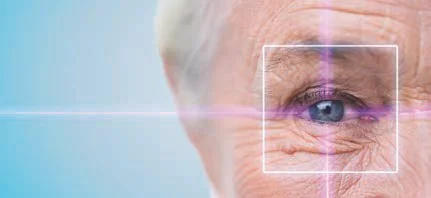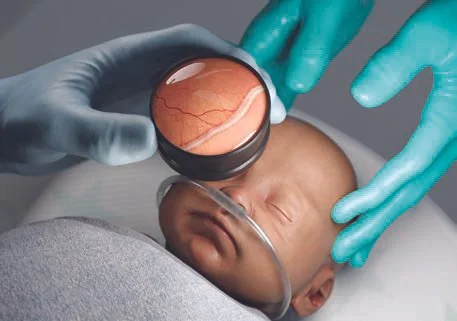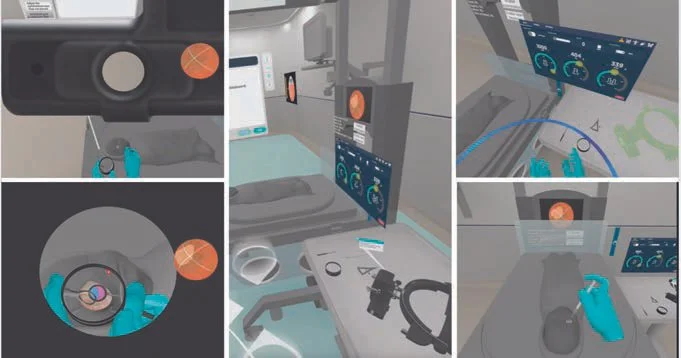A Decades-Long Campaign to Protect Sight
It is 30 years since the Knights Templar Eye Foundation, Inc. (KTEF) joined the American Academy of Ophthalmology in a journey to improve the vision care of patients both across the United States and around the globe, said Academy CEO Stephen D. McLeod, MD. “At the Academy’s 2025 annual meeting we honor its steadfast commitment to supporting the care so many patients need today, and its foresight in supporting innovative educational programs that help the patients of tomorrow.”
A historic commitment to eye care.
The Grand Encampment of Knights Templar formed KTEF in 1956. Since then, KTEF has disbursed more than $181 million for vision research, patient care, and education, thanks to the annual fundraising campaigns of Knights Templar members. KTEF’s philanthropy has included generous donations to the Academy Foundation.
At Illuminate the Night, the Academy celebrates a philanthropic partner.
From a 1995 donation of $2.25 million to support the National EyeCare Project (now EyeCare America) to a gift of $5 million in 2022 for a first-of-its-kind virtual reality (VR) surgery environment, KTEF has been a generous philanthropic partner of the Academy. As a mark of recognition, KTEF was named a 2025 Academy Foundation Honoree at the Illuminate the Night celebration on Saturday, Oct. 18 in Orlando.
Three decades of synergy.
“Year after year the passion and dedication that the Sir Knights bring to our shared goal of protecting and restoring sight for patients across the globe is inspirational,” said McLeod “They are truly invested in this mission.” KTEF donations to the Academy Foundation have helped to support a wide range of Academy activities, including the four groundbreaking programs discussed below.
KTEF and EyeCare America
“Ophthalmologists usually think of a mission trip as leaving the country, but there are many patients in our own community who need help. EyeCare America gives ophthalmologists the opportunity to serve enormously grateful patients right in their own office during their normal working day,” said Christie L. Morse, MD, a former chair of the EyeCare America (ECA) Steering Committee who will also be honored at Illuminate the Night.
The ECA program began in 1985 as the National Eye Care Project, with Academy volunteers providing eye exams and care to eligible patients, often with no out-of-pocket cost for the patient. By 1995, it was the largest public service program in U.S. medicine, and that year’s $2.25 million donation from KTEF enabled it to expand further. Previously, the KTEF had run its own program, providing assistance to those who faced loss of sight due to the need for surgical treatment. But “they were looking for a program where they could leverage their dollars a little bit better.” said the 1995 Academy President Richard P. Mills, MD, MPH, speaking in 2010 for an Academy oral history series. This led them to an ongoing partnership with the Academy. “It has been a win-win situation for both organizations,” said Mills. This year, the Academy expanded the program’s patient pool from eligible adults aged 65 and older to uninsured and underinsured adults aged 18 and over.
KTEF Pediatric Ophthalmology Education Center
In 2014, a $1 million donation from KTEF funded the development of the KTEF Pediatric Ophthalmology Education Center, which launched in 2015. The center enables U.S.-based and international ophthalmologists to access a single online source of vetted, high-quality clinical resources. In addition to case reports and surgical videos, the center also features simulators for strabismus diagnosis and retinoscopy that have reduced learning time from weeks to days for ophthalmologists worldwide. “By providing free access to simulators, case-based training, surgical videos, and other tools, the education center has had a global impact on pediatric eye care,” said Morse.
The two Academy members spearheading this project—K. David Epley, MD, and Faruk H. Örge, MD—mobilized almost 200 members of the American Association for Pediatric Ophthalmology and Strabismus to create the initial content for the center. For their roles in developing both this center and KTEF’s VR simulator (see below), Epley and Örge will be presented with the Academy’s 2025 Distinguished Service Award.
KTEF IRIS Registry Pediatric Ophthalmology Research Fund
The 2014 launch of the American Academy of Ophthamology IRIS® Registry (Intelligent Research In Sight) put ophthalmology at the forefront of a new era in big data analyses. Indeed, by the summer of 2025, the IRIS Registry included one quarter of the U.S. population and housed data on more than 805 million patient visits.
Anticipating the unprecedented opportunities that big data provided for researchers, KTEF donated $2 million to establish the KTEF Pediatric Ophthalmology Research Fund in 2018. The goals of this program are to enhance the IRIS Registry as a resource for practices and researchers, and to support Academy members in private practice who want to use IRIS Registry data to investigate diseases affecting children and to uncover optimal, real-world approaches to prevention and treatment.
Recipients of the fund’s research grants learn about the IRIS Registry, receive an introduction to big data analytics, and work closely with Academy staff on the analysis.
KTEF Pediatric Ophthalmology VR Simulation Program
After receiving a $5 million grant from KTEF in 2022, the Academy worked with fundamental XR to develop the KTEF Pediatric Ophthalmology VR Simulation Program (aao.org/vr), which was launched in 2024. The platform provides a free VR simulator for ophthalmologists and trainees around the world. For those who do not have access to a VR headset, a desktop version of the simulator also was developed.
KTEF. In addition to supporting surgical care through EyeCare America, the Knights Templar Eye Foundation (KTEF) is leveraging technology to support ophthalmologists through an online education center, big data research, and a virtual reality simulator (right).
The platform’s first module focuses on retinopathy of prematurity (ROP). Despite ROP being the leading cause of preventable blindness in children worldwide, trainees have little opportunity to learn and practice proper techniques for examining and treating babies, said Örge.
“Indeed, many countries don’t allow residents to perform any pediatric surgeries, so there was a huge need for an ROP simulator.”
Written for the Oct. 17, 2025, edition of EyeNet AAO 2025 News.
Copyright © 2025 American Academy of Ophthalmology, Inc.®







